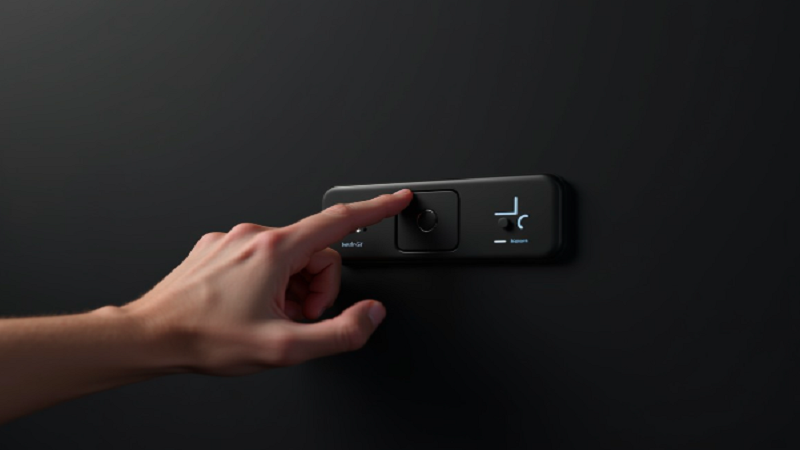In recent years, smart switches and modular touch switches have become increasingly popular in Key Factors Affecting Touch Switch Board Prices in India homes and businesses due to their modern design and advanced functionality. These sleek, high-tech devices offer a range of benefits over traditional switches, including enhanced convenience, aesthetic appeal, and greater control. However, the price of smart touch type switches can vary significantly depending on several factors. In this blog, we will explore the key factors influencing touch switch board prices in India and how these elements affect the overall cost.
Brand and Manufacturer
The brand and touch switch manufacturers play a crucial role in determining their price. Established brands known for quality and reliability often command higher prices due to their superior technology and customer support.
Brand Reputation: Leading brands that invest heavily in research and development to offer advanced features and durable products tend to price their touch switch boards higher.
Manufacturer’s Market Position: Manufacturers with a strong market presence and a history of delivering premium products can set higher prices. Newer or lesser-known brands may offer more competitive pricing to attract customers.
Features and Functionality
The features and functionality of smart touch switch boards significantly impact their pricing. More advanced features generally lead to higher costs.
Basic vs. Advanced Features: Basic touch type switches with simple on/off switch operation are usually more affordable. Switches with features like dimming controls, multi-zone management, and integration with home automation systems are priced higher.
Compatibility with Home Automation Systems: Touch switches that work seamlessly with a home automation system, voice assistants, or mobile apps tend to cost more due to added convenience and versatility.
Build Quality and Material
The build quality and materials used in modular touch switches are key factors that affect their price. High-quality materials contribute to durability and long-term reliability.
Material Quality: Touch switch boards made from premium materials like tempered glass panels not only enhance the look but also ensure durability, which leads to higher pricing.
Design and Finish: Switches with sleek, minimalist designs and polished finishes, or customisable options, usually command a higher price. High-end gang touch switches, with multiple switches in one unit, are an example of such premium designs.
Size and Number of Switches
The size and number of switches on a touch switch board can impact its cost. Larger switch boards with multiple panels or switches generally cost more due to increased complexity.
Single vs. Multi-Panel Switch Boards: Single-panel boards, which control fewer functions, are typically more affordable. In contrast, multi-panel boards managing multiple zones or devices are more expensive.
Customisation Options: Gang touch switches offering customisation options, such as adding or removing switches, may also increase the overall price.
Installation and Support
Installation costs and after-sales support can also influence the total price of smart touch switches.
Professional Installation: High-end capacitive touch switches, which detect user touch through a capacitive field, may require professional installation to ensure correct setup. Installation costs vary based on complexity and the service provider.
Warranty and Support: Products that come with extended warranties or offer comprehensive after-sales support are often priced higher, as they provide additional peace of mind.
Technological Advancements
Technological innovations in touch switch boards contribute to their pricing. Incorporating the latest technology can enhance functionality but increase the cost.
Innovative Features: Switch boards with the latest features like gesture control, energy monitoring, or programmable settings tend to be priced higher due to the added convenience.
Future-Proof Technology: Products designed to accommodate future technological upgrades may also be more expensive, as they ensure compatibility with evolving home automation systems and other smart home technologies.
Market Demand and Supply
Market demand and supply dynamics play a role in the pricing of smart switches.
Demand Fluctuations: Seasonal trends, promotions, and changing consumer preferences can influence demand for smart touch switches. High demand can drive up prices during peak seasons.
Supply Chain Factors: Disruptions in supply chains, such as raw material shortages or manufacturing delays, can impact the availability and price of these products.
Regional Variations
Regional factors such as location, import duties, and local market conditions can cause price variations for touch switch boards.
Prices can differ between urban and rural areas due to varying distribution costs, local market conditions, and the cost of living.
Import Duties and Taxes: Import duties, taxes, and customs fees can affect the price, especially for imported products, leading to regional price differences.
Conclusion
The price of smart touch switch boards in India is influenced by several factors, including brand reputation, features, build quality, size, installation costs, technological advancements, market demand, and regional variations. Understanding these factors can help you make an informed decision when purchasing smart touch switches for your home or business.
Whether you’re looking for basic functionality or advanced features, being aware of the factors affecting touch switch board prices in Key Factors Affecting Touch Switch Board Prices in India will guide you in selecting the right product to suit your needs and budget. Investing in high-quality smart switches not only enhances your home’s automation and control but also adds a modern touch to your living space.

